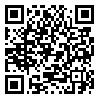Volume 10, Issue 4 (10-2006)
IBJ 2006, 10(4): 175-184 |
Back to browse issues page
Download citation:
BibTeX | RIS | EndNote | Medlars | ProCite | Reference Manager | RefWorks
Send citation to:



BibTeX | RIS | EndNote | Medlars | ProCite | Reference Manager | RefWorks
Send citation to:
Kadivar M, Khatami S, Mortazavi Y, Taghikhani M, Shokrgozar M A. Multilineage Differentiation Activity by the Human Umbilical Vein-Derived Mesenchymal Stem Cells. IBJ 2006; 10 (4) :175-184
URL: http://ibj.pasteur.ac.ir/article-1-251-en.html
URL: http://ibj.pasteur.ac.ir/article-1-251-en.html
Mehdi Kadivar 
 , Shohreh Khatami *
, Shohreh Khatami * 
 , Yousef Mortazavi
, Yousef Mortazavi 
 , Mohammad Taghikhani
, Mohammad Taghikhani 
 , Mohammad Ali Shokrgozar
, Mohammad Ali Shokrgozar 


 , Shohreh Khatami *
, Shohreh Khatami * 
 , Yousef Mortazavi
, Yousef Mortazavi 
 , Mohammad Taghikhani
, Mohammad Taghikhani 
 , Mohammad Ali Shokrgozar
, Mohammad Ali Shokrgozar 

Abstract:
Background: Mesenchymal stem cells (MSC) are a very promising transplantable stem cell source for a variety of cell replacement therapies. As the main source of MSC is bone marrow (BM), most of studies have been done on BM-derived MSC (BM-MSC). Umbilical cord (UC)-derived MSC (UC-MSC) which are recently introduced, is one of the good alternative source for these cells. The objective of this study was to isolate and characterize UC-MSC from human UC veins and studying of their potential to differentiate into various cell types such as fat, bone, cartilage and neuronal cells. Methods: In this way, a cell population was isolated from 20 UC veins using a solution of 0.1% collagenase type IV. After identification of isolated cells by immunocytochemical and flow cytometry methods, these cells were exposured with adipogenic, osteogenic, chondrogenic and neurogenic agents. Resulted differentiated cells were detected using specific staining for each lineage and room temperature (RT)-PCR. Results: Immunophenotypically, this cell population was positive for CD73, CD166, CD105 markers and a-smooth muscle actin and negative for CD31, CD34, CD49d markers, von Willebrand factor and smooth muscle myosin. Exposure of these cells to adipogenic, osteogenic, chondrogenic and neurogenic agents resulted in morphological changes followed by lineage-specific staining for each differentiated cell type. RT-PCR analysis showed that these differentiated cells express fat, bone, cartilage and neuronal markers, respectively. Conclusion: Altogether, these findings indicate that UC-MSC possess morphological, immunophenotypical and cell differentiation capacities similar to BM-MSC and so they can be used more extensively in cell based therapy protocols and in vitro differentiation study models.
Type of Study: Full Length/Original Article |
| Rights and permissions | |
 |
This work is licensed under a Creative Commons Attribution-NonCommercial 4.0 International License. |





.png)
